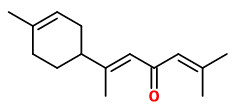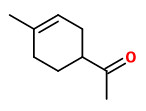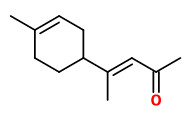Cedrus atlantica (Endl.) Manetti - syn. Cedrus libani subsp. atlantica (Endl.) Batt. & Trab.; Pinus atlantica Endl. - Pinaceae
Atlas cedar, Atlas-Zeder
Large coniferous evergreen tree, 30–35 m tall, native to the Atlas Mountains of Algeria and Morocco. Atlas cedarwood oil is produced by steam distillation of the sawdust or waste wood of C.atlantica.
„The essential oil, which was obtained by steam distillation from the sawdust of Cedrus atlantica Man. from Morocco, was analyzed by GC and GC/MS. Fifty-three components were identified among which the three α-, β- and γ-isomers of himachalene (70%) were predominant. Smaller amounts of the (E) and (Z) isomers of α-, β- and γ-atlantone were also present.“
[Essential oil components in sawdust of Cedrus atlantica from Morocco. Chalchat, J. C., Garry, R. P., Miehet, A., Benjilali, B., Journal of Essential Oil Research, Vol.6(3), 1994, 323-325]
„The yield and the chemical composition of Atlas cedarwood oil produced by two distillation modes and seven sample origins were determined. Steam distillation and hydrodistillation gave approximately the same yield (2.5-2.6 ml/100g). The samples from Adrej, Tounfite, Tamjilt and Ajdir gave the highest oil yields. The major constituents in the essential oil were α-himachalene (7.4-16.4%), γ-himachalene (5.1-8.6%), β-himachalene (23.4-40.4%) and (E)-α-atlantone (5.2-29.5%).“
[Analysis of Moroccan Atlas Cedarwood Oil (Cedrus atlantica Manetti). Aberchane, M., Fechtal, M., & Chaouch, A., Journal of Essential Oil Research, Vol.16(6), 2004, 542-547]
Major constituents of a commercial essential oil were β-himachalene (42.7%), α-himachalene (15.1%), γ-himachalene (9.5%), and (E)-α-atlantone (4.1%). Minor components were (Z)-α-atlantone (0.8%), (E)-γ-atlantone (1.0%), (4R,8R)-deodarone (1.1%), (4R,8S)-deodarone (1.0%), and 4-acetyl-1-methylcyclohexene (1.0%) e.g.
[Nam, A-M. Contribution de la RMN 13C à l'analyse des huiles végétales, huiles essentielles et résines (Olea europaea, Pinus halepensis et Cedrus atlantica). Diss. Université Pascal Paoli, 2014] https://tel.archives-ouvertes.fr/tel-00978825/document
 (E)-α-atlantone |  4-acetyl-1-methylcyclohexene |  vestitenone |
In a GC-O investigation on Moroccan Atlas cedarwood essential oil following the AEDA methodology, (E)-α-atlantone was very weak or odorless for most evaluators. The most potent odorants were
4-acetyl-1-methylcyclohexene (Atlas cedarwood-like), vestitenone (citrus-lemon), p-cresol (phenolic, animal), 4-methylacetophenone (almond-like), undecan-2-one (aldehydic, coriander-like) and several nonidentified constituents. One of the strongest unknown components had a rather typical Atlas cedarwood note, but 4-acetyl-1-methylcyclohexene showed the highest FD factor and possessed a very characteristic cedarwood odor, thus may be considered as the principal key odorant of Atlas cedarwood oil.
[Nicolas Baldovini, Jean-Jacques Filippi, „Natural Fragrant Raw Materials“ in: Buettner, Andrea, ed. Springer Handbook of Odor. Springer, 2017, 49-50; lit. cit.]
[Uehara, Ayaka, et al. „Odor-active constituents of Cedrus atlantica wood essential oil.“ Phytochemistry 144 (2017): 208-215]

Cedrus atlantica (Endl.) Manetti ex Carrière as Pinus atlantica Endl.
Trew, C.J., Ehret, G.D., Plantae selectae, vol.7, t.61 (1765) [G.D.Ehret]
http://plantgenera.org/species.php?id_species=215382
Cedrus atlantica 'Glauca'
© Rolf Marschner (2006),
www.botanische-spaziergaenge.at
